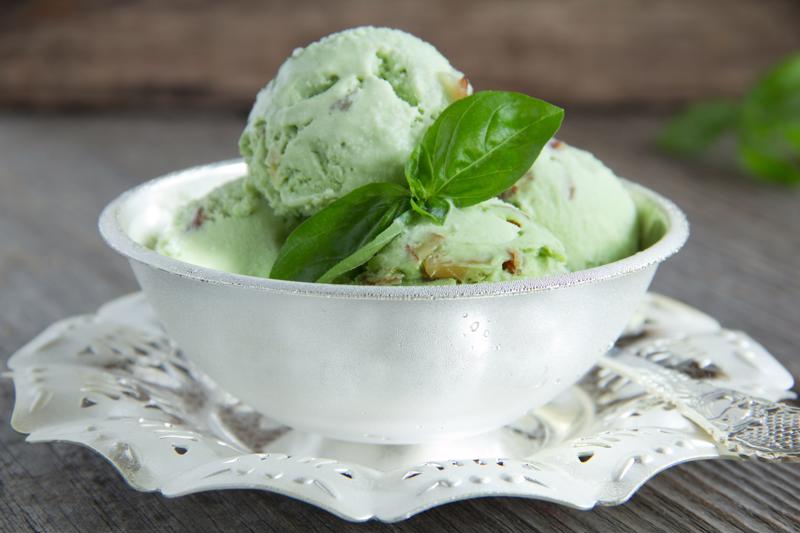Terms like baked goods and pastries often bring sweet, sugary examples to mind among the general public. Of course, professional pastry chefs and online pastry arts program students know that the world of baked goods is full of both savory and sweet choices, and plenty of final products bring these two foundational tastes together. With baked goods that offer a broader range of flavors seeing increased popularity among chefs and customers alike, as Pastry Arts magazine pointed out, it’s an especially good time to take a closer look at this trend.
 Mint and nut can bring complementary savory flavors to sweets from ice cream to pastries.
Mint and nut can bring complementary savory flavors to sweets from ice cream to pastries.Bridging savory and sweet in pastry arts
Perhaps the easiest way to consider a broader approach to this type of pastry, whether it’s a dessert or something intended as a more savory part of a meal or snack, is to simply consider which flavors work well together. Herbs, spices, rendered fats and many other ingredients, by no means sweet in and of themselves, can add plenty of nuance and more robust flavors to a dessert. Pastry Arts magazine pointed out how Shawn Gawle, Executive Pastry Chef for the McGuire Moorman Hospitality group, uses candied rosemary in his Gateau Basque and duck fat in cannoli dough, among many other combinations.
On the other side of the coin, there are plenty of savory baked goods that can be effectively complemented with sweet flavors. A mostly savory, spiced zucchini bread, such as this standby recipe from Paula Deen, can become even more enjoyable with a honey butter or slightly sweet, citrus-flavored cream cheese. Classic buttermilk biscuits, which feature a rich flavor – as opposed to sweet – and often bring to mind southern dinners and savory breakfasts like biscuits and gravy, are delicious when spread with jams and jellies. When intended for a specific menu item or spot in a bakery case, they can easily be studded with a variety of fruits or served with syrups, sweetened butters and much more. Even something as simple as cornbread can bring both flavors together.
Another aspect to consider is the addition of umami-rich ingredients to desserts, which offers eaters a rich sense of fullness. Green tea is one of the most common umami flavors to cross over into desserts, from ice creams to pastries. Star Chefs pointed to green tea macaroons as a successful example of the blending of sweet and savory. Another avenue to consider is a soy-sauce caramel, like this example shared by Jerry James Stone. It offers a rich, complex flavor that plays well with the basic caramel foundation. This could potentially be used to top, fill or glaze pastries, or served on the side as a dipping sauce.
Why combining savory and sweet can be so exciting for pastry chef
While the mix of sweet and savory tastes is often associated with more complex pastries and trendy dining experiences, there’s no reason why baked goods combining these flavors can’t be deployed in any type of restaurant or bakery. While intricate, delicate and expensive pastries might not be the best choice for a casual cafe or family restaurant, sweet-savory hybrids like cupcakes with green tea icing or scones with cheese and green onions mixed in can perform well in many different environments.
Pastry arts chefs have plenty of new tastes to explore when it comes to putting together savory and sweet flavors. Building a strong foundation with a focused, effective and modern pastry arts education can go a long way toward creating successful new baked goods and perfecting traditional recipes. Consider Escoffier’s online pastry arts school to take the next step in your culinary education.


